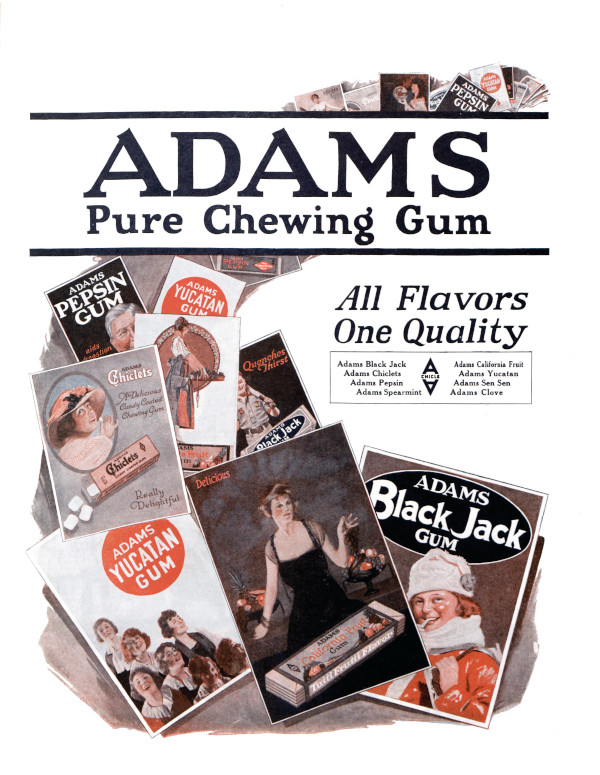How a Mexican Dictator Helped Invent Chewing Gum
America’s chewing gum industry began with the help of a deposed Mexican dictator. In the 1850s, Thomas Adams was secretary to General López de Santa Anna, then living in New York and plotting a return to power in Mexico. Santa Anna had arrived in New York with a boatload of chicle, a latex substance from the sapodilla tree, and the idea of selling it as an inexpensive alternative to rubber. It never caught on with buggy-tire makers, but Adams realized chicle could be made into chewing gum. After purchasing the cargo from Santa Anna, Adams began adding flavorings to the chicle. By 1871, he was selling “Adams New York Chewing Gum” in drugstores. In 1884, he introduced his first big hit: licorice-flavored “Black Jack” gum. In 1899, he introduced the popular Chiclets, as well as the vending machine, from which he dispensed his gum on New York City subway platforms. The Adams company continued production for decades, adding new flavors like Clove and Pepsin. But in the 1970s, declining sales caused the company to cease production. Now owned by the British confectionary company Cadbury, the company is again manufacturing gum and, for older gum chewers, nostalgia.

This article is featured in the July/August 2020 issue of The Saturday Evening Post. Subscribe to the magazine for more art, inspiring stories, fiction, humor, and features from our archives.
Fear Is Contagious: When New Yorkers Burned Down a Quarantine Hospital
—“Riot at New York,” September 11, 1858
On September 1, a mob collected and burned the principal portion of the quarantine buildings on Staten Island, only one large building being spared. The patients were first carried out, and the hospital and sheds, including the physician’s house, then set fire to and burned to the ground. Those engaged took no measures for concealment or disguise, and calculate to escape punishment, supposing that no grand jury will indict them.
A few days later, a row of six brick houses connected to the hospital was set on fire and destroyed, and soon after, the great Marine Hospital was discovered to be in flames. At the time it contained 125 patients, principally suffering from yellow fever, typhus, smallpox, and other malignant diseases.
Doctors Walser and Bessell have devoted their attentions to the sick, and are administering to their wants, although nearly exhausted from want of sleep and the excitement and exposure resulting from the destruction of the hospital and other buildings. Dr. Walser, throughout the terrible trying scenes of the last 48 hours, has acted the part of a hero and philanthropist.
Three sick men from the ship Liberty are lying on the pier, there being no shelter for them.
The rain is still pouring down, and there is no place within the quarantine walls to shelter the sick.

Featured image: Attack on the Quarantine Establishment, September 1, 1858. (New York Public Library)
This article is featured in the July/August 2020 issue of The Saturday Evening Post. Subscribe to the magazine for more art, inspiring stories, fiction, humor, and features from our archives.